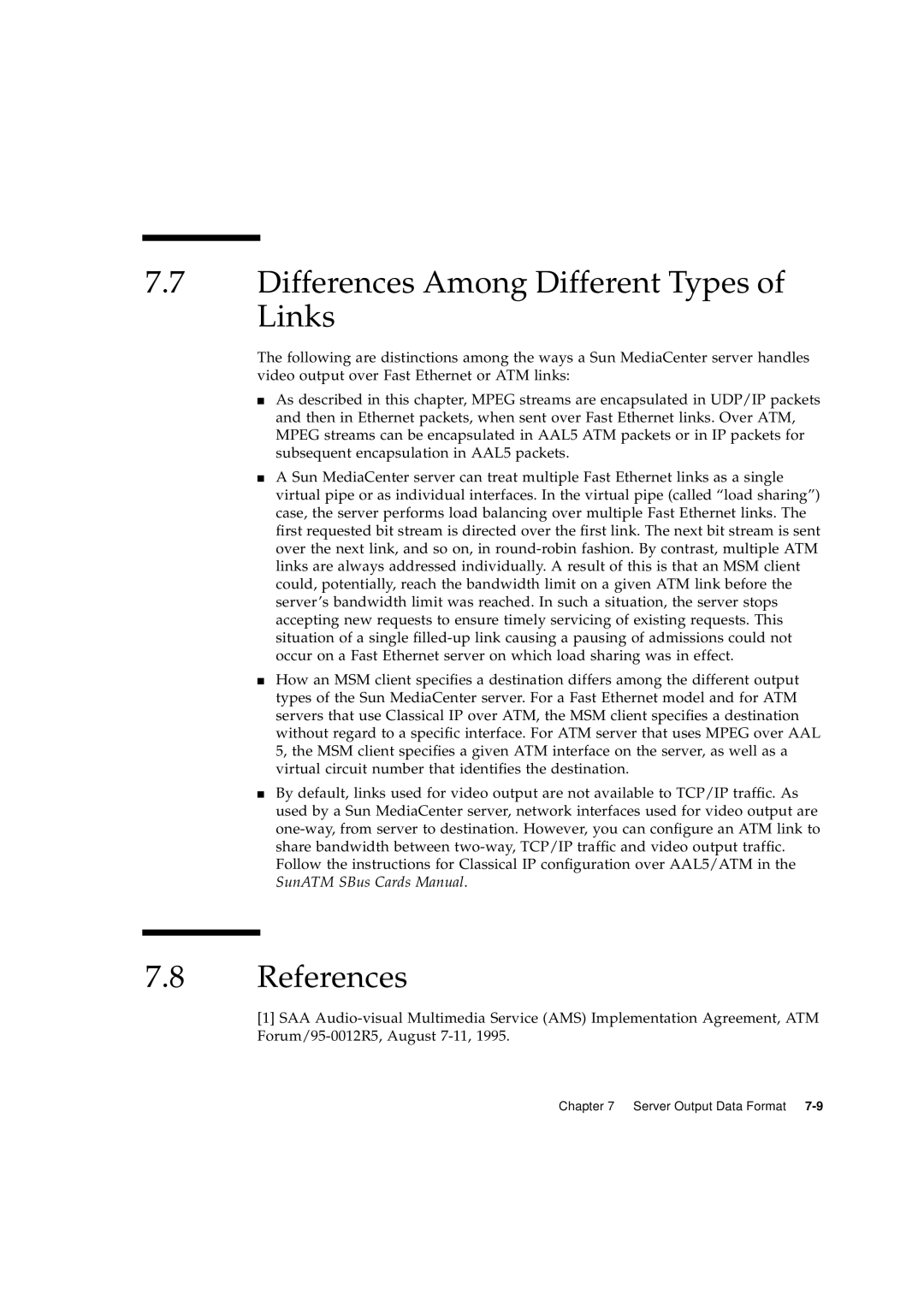
7.7Differences Among Different Types of Links
The following are distinctions among the ways a Sun MediaCenter server handles video output over Fast Ethernet or ATM links:
■As described in this chapter, MPEG streams are encapsulated in UDP/IP packets and then in Ethernet packets, when sent over Fast Ethernet links. Over ATM, MPEG streams can be encapsulated in AAL5 ATM packets or in IP packets for subsequent encapsulation in AAL5 packets.
■A Sun MediaCenter server can treat multiple Fast Ethernet links as a single virtual pipe or as individual interfaces. In the virtual pipe (called “load sharing”) case, the server performs load balancing over multiple Fast Ethernet links. The first requested bit stream is directed over the first link. The next bit stream is sent over the next link, and so on, in
■How an MSM client specifies a destination differs among the different output types of the Sun MediaCenter server. For a Fast Ethernet model and for ATM servers that use Classical IP over ATM, the MSM client specifies a destination without regard to a specific interface. For ATM server that uses MPEG over AAL 5, the MSM client specifies a given ATM interface on the server, as well as a virtual circuit number that identifies the destination.
■By default, links used for video output are not available to TCP/IP traffic. As used by a Sun MediaCenter server, network interfaces used for video output are
7.8References
[1]SAA
Chapter 7 Server Output Data Format
